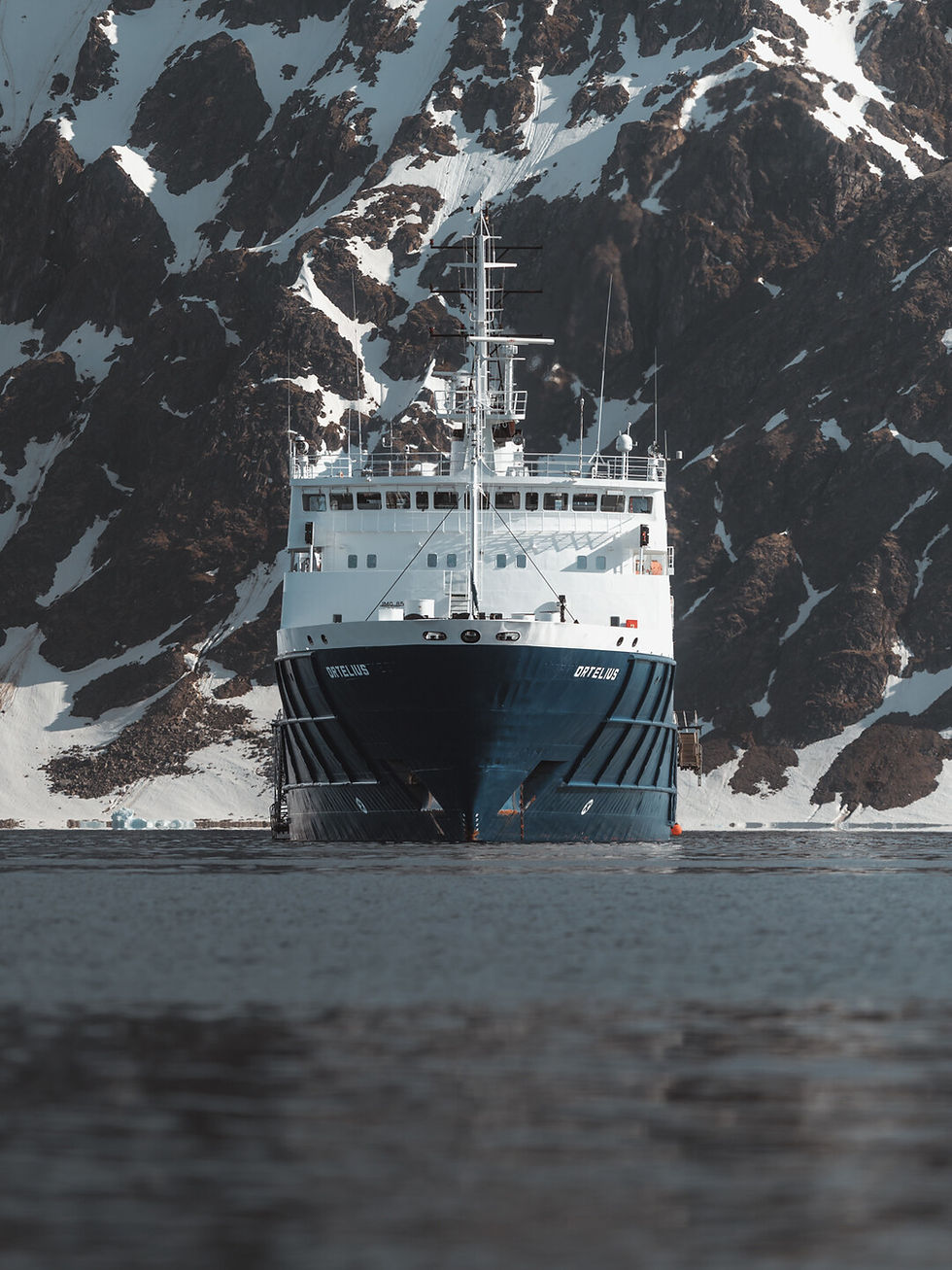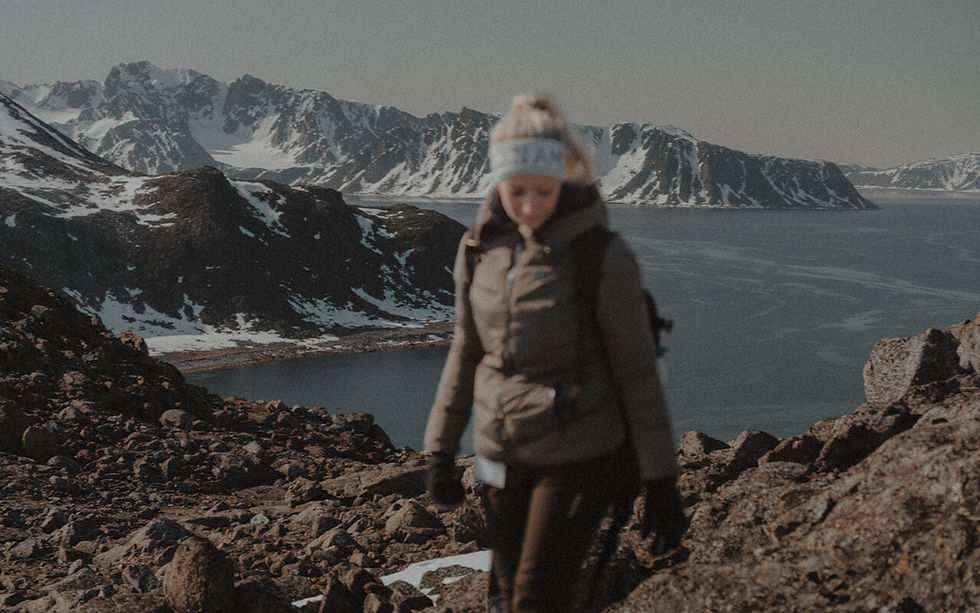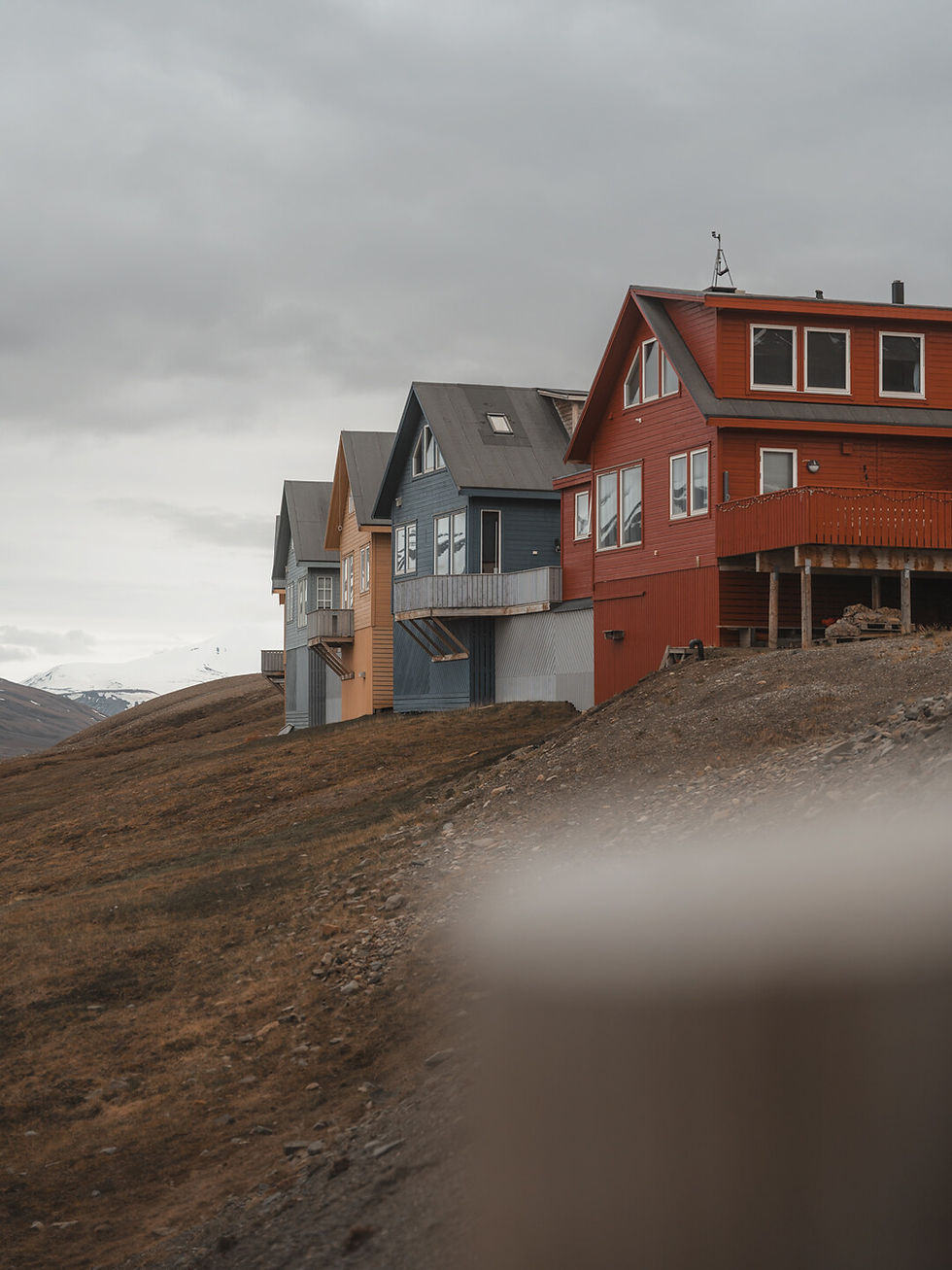Best Time to Visit the Arctic – When to See Polar Bears, Take an Arctic Cruise & Chase the Northern Lights
- Anna & Tom

- Aug 20
- 4 min read
An Arctic expedition is a once-in-a-lifetime adventure. But when exactly is the best time to visit the Arctic? In this guide, you’ll find everything you need to plan your journey into the land of eternal ice – whether you dream of spotting polar bears, taking an unforgettable Arctic cruise, or chasing the magical Northern Lights in the Arctic.

Table of Contents
1. What and Where Is the Arctic?
The Arctic is the region surrounding the North Pole, covering the Arctic Ocean and bordering landmasses such as Svalbard, Greenland, Canada, Alaska, and parts of Russia. Geographically, it lies above the Arctic Circle (66°33′ North).
For thousands of years, the Arctic has been home to various Indigenous peoples who have adapted to survive in extreme cold. Today, it’s famous for its unique wildlife, breathtaking ice landscapes, and natural phenomena like the Polar Night (when it’s dark for months in winter) and the Midnight Sun (when the sun stays visible 24 hours a day in summer).
Due to its harsh climate and remote location, the Arctic remains one of the last great wildernesses on Earth – and is gaining increasing global attention because of climate change and geopolitical interests.

2. Why Travel to the Arctic?
The Arctic is no ordinary destination – it’s wild, pristine, and full of surprises. Once you’ve experienced the vast white landscapes, the crunch of ice beneath your boots, and the stillness of the polar air, you’ll never forget it.
Whether by expedition ship, snowmobile, or skis – an Arctic journey is pure fascination. For us, the highlights were the incredible wildlife (polar bears, walruses, arctic foxes, reindeer), the unique light, and the crystal-clear air.
One of our most unforgettable moments was reaching the pack ice after days at sea – the view was so dreamlike that we felt a deep connection to our beautiful blue planet.

3. Best Time to Visit the Arctic by Season
You can technically visit the Arctic year-round – but conditions, daylight, and wildlife sightings change dramatically with the seasons.
Here’s a quick overview:
March to May – Best for snowmobiling, Northern Lights, and ski expeditions
June to August – Perfect for Arctic cruises, wildlife spotting, and Midnight Sun
September to October – Good chance to see Northern Lights with milder temperatures
November to February – Dark, extremely cold, but ideal for photographers and aurora chasers
4. Spring (March to May) in the Arctic
Spring here is still deep winter by most standards. The sun returns slowly, casting magical light over sparkling snow landscapes. Perfect for:
Snowmobile expeditions
Ski tours or dog sledding adventures
Northern Lights spotting (until mid-April)
Temperatures: Usually between -20°C and -5°C (depending on location). Our Arctic winter packing list will help you prepare the right gear. |
5. Summer (June to August) – Best Time for Arctic Cruises & Polar Bear Watching
The Arctic summer is short but intense. This is the prime time for expedition cruises to Svalbard, Greenland, or the Northwest Passage. You can:
Spot polar bears (often on ice floes or along the coast)
See walruses and whales
Experience the Midnight Sun (24 hours of daylight!)
Temperatures: 0°C to 10°C – but it often feels warmer in the sun. Perfect for outdoor activities and photography. |

We joined an expedition cruise in June–July and made some truly unforgettable memories.

...one of the absolute highlights was spotting a polar bear in the wild.

6. Autumn (September to October)
When summer ends, the Arctic enters a quieter, underrated season. Days grow shorter, the light changes, and the first Northern Lights appear.
Advantages:
Start of aurora season
Fewer tourists than in summer
First snowfalls create stunning scenery
Note: Most cruises end by mid-September as sea ice begins to return. |
7. Winter (November to February) – Best Time to See the Northern Lights in the Arctic
This season is for true adventurers – extremely cold, very dark, but unforgettable.
You can:
See the Northern Lights almost every clear night
Experience dramatic ice landscapes
Go on snowmobile or dog sled expeditions
Temperatures: Can drop to -30°C – proper gear is essential! Our Arctic packing list will help you prepare. |

8. When Can You See the Northern Lights in the Arctic?
The best time to see the Northern Lights in the Arctic is from September to April.. You’ll need clear skies, minimal light pollution, and ideally a strong solar storm (high KP index).
Top locations include:

9. When to Take an Arctic Cruise – Best Months & Routes
Most Arctic cruises operate between June and September, depending on ice conditions. Popular routes include:
Franz Josef Land
Greenland
Canadian Arctic / Northwest Passage
For the best chance of seeing polar bears, visit in July or August.
10. Our Top Arctic Travel Tips
Book early – Arctic trips sell out fast
Bring the right gear – insulated, weatherproof clothing is a must (check our Arctic packing list)
Stay flexible – weather and ice can change plans
Keep your camera ready – landscapes and wildlife are spectacular
11. Conclusion – Our Recommendation for the Best Time to Visit
If you’re wondering when is the best time to visit the Arctic, for a first trip we recommend June to August – stable weather, active wildlife, and 24-hour daylight make it the perfect introduction.
If your dream is to see the Northern Lights, aim for September or March – you’ll get magical colors, beautiful light, and a taste of Arctic winter.
📩 Want more travel tips?
Subscribe to our free newsletter for fresh inspiration once a month – including secret tips we don’t share on the blog.
Want a closer look at our adventures?
Check out our Instagram accounts tom_rbg_ and anna_rbg_ – and feel free to reach out if you have questions about our routes!














